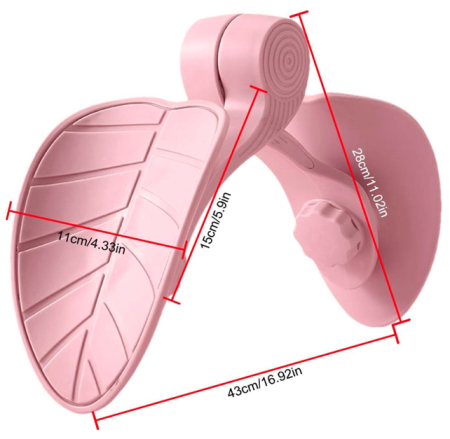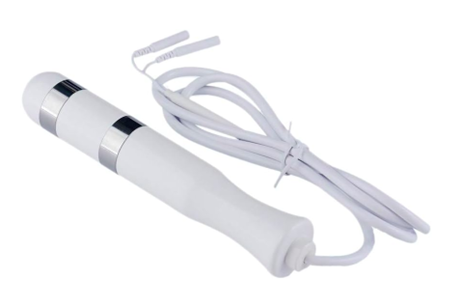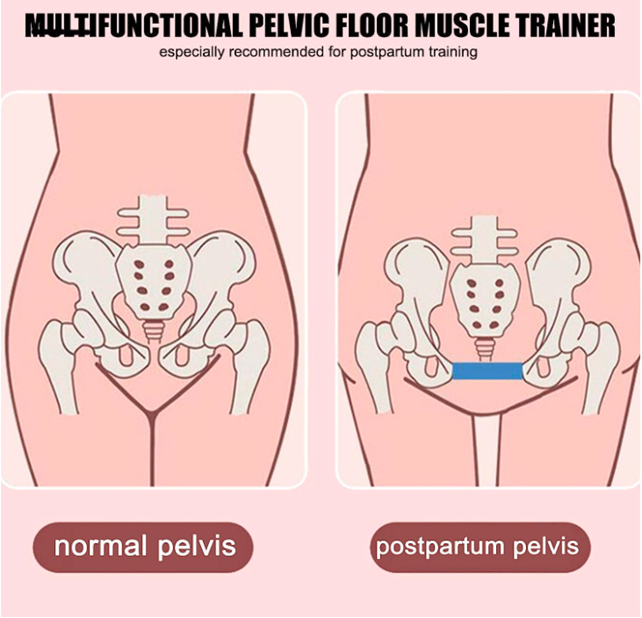Pelvic Floor Therapy for Incontinence

Pelvic Floor Therapy For Incontinence –
A Comprehensive Guide
If you’re experiencing pelvic floor or incontinence issues, you’re not alone. Many ladies have to deal with these problems. They can both have a significant impact on your quality of life. Fortunately, there are options for treatment, including pelvic floor physical therapy. This type of Pelvic Floor Therapy For Incontinence is designed to help you strengthen the muscles in your pelvic floor, which will then improve bladder control, reduce pain, and enhance sexual function.
Pelvic floor physical therapy can be done in a clinical setting with a trained therapist, but it’s also possible to do exercises at home. In fact, there are many benefits to doing pelvic floor therapy at home. For one thing, it can be more convenient and cost-effective than going to a clinic. Additionally, doing exercises at home can help you feel more in control of your treatment and progress at your own pace.
If you’re interested in trying pelvic floor physical therapy at home, there are many resources available to help you get started. From instructional videos to specialized devices, there are many tools that can help you get the most out of your therapy. With a little effort and dedication, you can greatly improve your pelvic floor health and enjoy a better quality of life.
Pelvic Floor Therapy For Incontinence – Key Takeaways
- Pelvic floor physical therapy can help improve bladder control, reduce pain, and enhance sexual function.
- Doing pelvic floor therapy at home can be more convenient and cost-effective than going to a clinic.
- There are many resources available to help you get started with pelvic floor physical therapy at home, including instructional videos and specialized devices.

The Pelvic Floor After Birth
After giving birth, your pelvic floor muscles may be stretched, weakened, or damaged. This can cause various symptoms such as urinary incontinence, fecal incontinence, and pelvic pain. It is essential to take care of your pelvic floor after birth to prevent long-term problems.
During pregnancy and childbirth, the pelvic floor muscles are under significant strain. The muscles can become overstretched, leading to decreased muscle tone and strength. This can result in urinary and fecal incontinence, as well as sexual dysfunction.
It is recommended that you start doing pelvic floor exercises as soon as possible after giving birth. Pelvic floor exercises, also known as Kegels, involve contracting and relaxing the muscles that support the bladder, uterus, and rectum. These exercises can help to strengthen the pelvic floor muscles and improve bladder and bowel control.
RELATED INFORMATION: Stretch Marks – How To Get Rid of them
Kegel Exercises
To perform a Kegel exercise, tighten your pelvic floor muscles as if you are trying to stop the flow of urine. Hold the contraction for 5 seconds, then relax for 5 seconds. Repeat this exercise 10 times, three times a day.
In addition to pelvic floor exercises, there are other things you can do to take care of your pelvic floor after birth. These include:
- Avoiding heavy lifting
- Maintaining a healthy weight
- Quitting smoking
- Avoiding constipation by eating a high-fiber diet and drinking plenty of water
Pelvic Floor Problems After Giving Birth
If you are experiencing pelvic floor problems after giving birth, it is important to seek help from a healthcare provider. A pelvic floor physical therapist can assess your pelvic floor muscles and provide personalized exercises to help improve your symptoms.
In summary, the pelvic floor muscles play a crucial role in pregnancy and childbirth. After giving birth, it is important to take care of your pelvic floor to prevent long-term problems. Pelvic floor exercises, along with other lifestyle changes, can help to strengthen the muscles and improve bladder and bowel control. If you are experiencing pelvic floor problems, seek help from a healthcare provider.
Pelvic Floor Therapy
Pelvic floor therapy is a non-surgical treatment that can help address pelvic floor dysfunction. If you are experiencing symptoms such as incontinence, pain during sex, or difficulty with bowel movements, pelvic floor therapy may be able to help.
What is Pelvic Floor Therapy?
Pelvic floor therapy involves physical methods of strengthening and/or relaxing the muscles of the pelvic floor to help improve core stability and control over urination, bowel movements, and sexual function. A pelvic floor physical therapist might use a number of techniques to address PFD, ranging from strengthening exercises to manual therapy (i.e. hands-on stretching or massage), pelvic floor biofeedback, electrical stimulation, and the use of vaginal dilators.
Pelvic Floor Therapy at Home
If you are unable to visit a pelvic floor physical therapist in person, there are still exercises and techniques you can try at home to help strengthen your pelvic floor muscles. These exercises include Kegels, pelvic tilts, and bridges. It is important to note that doing these exercises incorrectly can actually make your symptoms worse, so it may be helpful to consult with a pelvic floor physical therapist before starting an at-home exercise program.
Pelvic Floor Therapy Devices
There are also a variety of pelvic floor therapy devices available on the market that can help with pelvic floor dysfunction. These devices range from vaginal weights to electrical stimulation devices. However, it is important to note that not all of these devices are created equal, and some may be more effective than others. Additionally, it is important to consult with a healthcare provider before using any new device.
Pelvic Floor Therapy Cost
The cost of pelvic floor therapy can vary depending on a number of factors, including the location of the therapy, the experience of the therapist, and the duration of the therapy. In general, pelvic floor therapy can be more expensive than other types of physical therapy. However, many insurance plans do cover the cost of pelvic floor therapy, so it is important to check with your provider to see what is covered.
Pelvic Floor Therapy for Incontinence
Pelvic floor therapy can be an effective treatment for incontinence. In fact, it is often the first line of treatment recommended for stress incontinence, which is the most common type of incontinence in women. Pelvic floor therapy can help strengthen the muscles that support the bladder and urethra, which can help reduce leakage.
In conclusion, pelvic floor therapy can be an effective treatment for a variety of pelvic floor dysfunction symptoms. Whether you are able to visit a pelvic floor physical therapist in person or try exercises and devices at home, it is important to consult with a healthcare provider to determine the best course of treatment for you.

Pelvic Floor Issues
If you’re experiencing pelvic floor issues, you’re not alone. Pelvic floor disorders affect millions of people worldwide, and they can cause a variety of uncomfortable symptoms. These issues can occur in both men and women, but they are more common in women.
Pelvic floor disorders can be caused by a variety of factors, including pregnancy and childbirth, obesity, aging, chronic constipation, and certain medical conditions. Some of the most common pelvic floor disorders include:
- Urinary incontinence: the involuntary leakage of urine
- Fecal incontinence: the involuntary leakage of stool
- Pelvic organ prolapse: the descent of one or more pelvic organs into the vaginal canal
- Pelvic pain: pain in the pelvic region that lasts for more than six months
If you’re experiencing any of these symptoms, it’s important to talk to your healthcare provider. They can help you determine the cause of your symptoms and recommend appropriate treatment options.
Pelvic Floor Physical Therapy
One effective treatment option for pelvic floor disorders is pelvic floor physical therapy. This type of therapy involves exercises that help strengthen the muscles of the pelvic floor. Pelvic floor physical therapy can be done at home or with the help of a trained therapist.
In addition to pelvic floor exercises, there are other things you can do at home to help manage your pelvic floor issues. These include:
- Maintaining a healthy weight
- Eating a high-fiber diet to prevent constipation
- Avoiding heavy lifting
- Practicing good posture
- Avoiding straining during bowel movements
By making these lifestyle changes and practicing pelvic floor exercises, you can help manage your pelvic floor issues and improve your overall quality of life.
RELATED INFORMATION: How To Treat Anxiety Disorders
Pelvic Floor Training at Home

Pelvic floor training, also known as pelvic floor exercises, is a type of physical therapy that can help strengthen your pelvic floor muscles. These muscles are responsible for supporting your bladder, uterus, and rectum. Weak pelvic floor muscles can lead to urinary incontinence, fecal incontinence, and pelvic organ prolapse.
To perform pelvic floor training at home, you need to identify the muscles you need to target. One way to do this is to stop urination midstream. The muscles you use to do this are your pelvic floor muscles. Once you have identified these muscles, you can start doing exercises to strengthen them.
One popular exercise is the Kegel exercise, which involves contracting and relaxing your pelvic floor muscles. To do a Kegel exercise, you can follow these steps:
- Sit or lie down with your legs slightly apart.
- Tighten your pelvic floor muscles as if you are trying to stop urinating.
- Hold the contraction for three to five seconds, then relax for three to five seconds.
- Repeat the exercise 10 times, three times a day.
Another exercise is the bridge exercise, which targets your glutes and pelvic floor muscles. To do a bridge exercise, you can follow these steps:
- Lie on your back with your knees bent and feet flat on the floor.
- Tighten your pelvic floor muscles.
- Lift your hips off the ground until your body forms a straight line from your shoulders to your knees.
- Hold the position for three to five seconds, then lower your hips back down to the ground.
- Repeat the exercise 10 times, three times a day.
Pelvic Tilts
In addition to these exercises, there are other ways to incorporate pelvic floor training into your daily routine. For example, you can try doing pelvic tilts while standing or sitting, or practice deep breathing exercises that involve engaging your pelvic floor muscles.
It’s important to note that pelvic floor training may not be appropriate for everyone. If you have a medical condition that affects your pelvic floor muscles, such as pelvic organ prolapse or a bladder or bowel disorder, you should consult with a healthcare provider before starting any exercise program.
Pelvic Floor Therapy for Incontinence:
Pelvic Floor Therapy Devices
If you are looking for ways to improve your pelvic floor health, using pelvic floor therapy devices may be a good option for you. These devices can help strengthen and relax your pelvic floor muscles, which can improve your core stability, control over urination and bowel movements, and sexual function.
Physical Therapy Exercises for Pelvic Floor Prolapse
Before using any devices, it is important to consult with a pelvic floor physical therapist to determine which exercises and devices are right for you. Physical therapy exercises for pelvic floor prolapse can include Kegel exercises, squats, and pelvic tilts.
Pelvic Floor Physical Therapy Devices
Pelvic floor physical therapy devices come in different shapes and sizes, and they use various methods to help strengthen and relax your pelvic floor muscles. Some examples of these devices include vaginal weights, pelvic floor exercisers, and electrical stimulation devices.

Pelvic Floor Biofeedback Device
Pelvic floor biofeedback devices are designed to help you monitor and improve your pelvic floor muscle function. These devices use sensors to measure the strength of your pelvic floor muscles and provide feedback to help you improve your muscle control.
Pelvic Floor Trainer Device
Pelvic floor trainer devices are designed to help you strengthen your pelvic floor muscles through resistance training. These devices typically use resistance bands or weights to provide resistance during exercises.
Best Pelvic Floor Device
The best pelvic floor device for you will depend on your specific needs and goals. It is important to consult with a pelvic floor physical therapist to determine which device is right for you.
FDA Approved Pelvic Floor Devices
When choosing a pelvic floor device,always look for devices that are FDA approved. FDA approval ensures that your new device has been tested and shown to be safe and effective for your intended use.
Overall, pelvic floor therapy devices can be a useful tool for improving pelvic floor health. However, you should only use these devices under the guidance of a pelvic floor physical therapist to ensure that they are being used safely and effectively.
Pelvic Floor Therapy for Incontinence:
Frequently Asked Questions:
Some effective pelvic floor exercises to do at home?
Pelvic floor exercises, also known as Kegel exercises, can be done at home to help strengthen the muscles of the pelvic floor. To do a Kegel exercise, you should first identify the muscles that you use to stop the flow of urine. Then, contract those muscles for 5 seconds, relax for 5 seconds, and repeat for 10-15 repetitions, 3-4 times per day. You can also try variations of Kegel exercises, such as quick contractions or holding the contraction for longer periods of time.
What are some common causes of pelvic floor dysfunction?
Pelvic floor dysfunction can be caused by a variety of factors, including pregnancy and childbirth, aging, obesity, chronic coughing, and certain medical conditions such as prostate surgery or neurological disorders. In some cases, pelvic floor dysfunction may be caused by weak or tight muscles in the pelvic floor.

How often should I do pelvic floor exercises for best results?
For best results, it is recommended that you do pelvic floor exercises, such as Kegels, 3-4 times per day. It is important to be consistent with your exercises and to gradually increase the number of repetitions as your muscles become stronger. You should also continue to do pelvic floor exercises even after you see improvement in your symptoms.
What are some helpful resources for pelvic floor physical therapy at home?
There are many resources available to help you with pelvic floor physical therapy at home. You can find instructional videos and guides online, as well as apps that can help you track your progress and remind you to do your exercises. You can also consult with a pelvic floor physical therapist for personalized guidance and support.
Can pelvic floor physical therapy help with urinary incontinence?
Yes, pelvic floor physical therapy can be an effective treatment for urinary incontinence. By strengthening the muscles of the pelvic floor, you may be able to improve your bladder control and reduce episodes of urinary incontinence. It is important to consult with a healthcare provider to determine the best course of treatment for your individual needs.
What are some tips for maintaining a healthy pelvic floor?
Maintaining a healthy pelvic floor can help prevent pelvic floor dysfunction and improve overall pelvic health. Some tips for maintaining a healthy pelvic floor include practicing good posture, maintaining a healthy weight, avoiding constipation, staying hydrated, and avoiding activities that put pressure on the pelvic floor, such as heavy lifting or high-impact exercise. It is also important to avoid smoking and to practice relaxation techniques to reduce stress and tension in the pelvic floor muscles.

